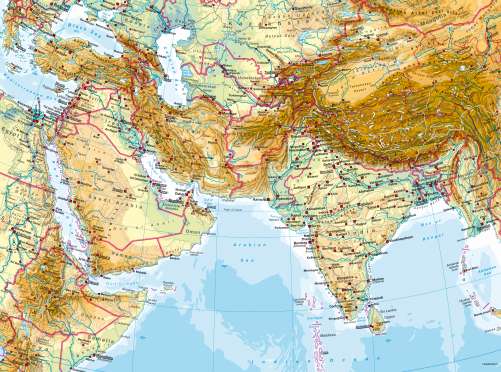As reports on the Joint Comprehensive Plan of Action agreement between Iran and P5+1—the United States, the United Kingdom, France, Russia, China and Germany—began to trickle out from Vienna on 14 July 2015, India and Pakistan quickly put out statements welcoming the deal. The deal will have major consequences for South Asia.
Indian and Pakistani policymakers realize that since they had curtailed their engagement with Iran during the sanctions period, both countries will now have to make extra efforts to benefit from the strategic and economic opportunities arising from the potential rapprochement with Iran, wrote the East Asia Forum.
This is particularly true of India, which in the pre-sanctions period was one of Iran’s major partners in energy and security cooperation: Iran was the second-largest supplier of crude oil to India and both countries propped up the Northern Alliance in Afghanistan against the Taliban. But this partnership unraveled quickly after 2006 when the United Nations imposed sanctions on Iran and India’s engagement with the United States began to blossom. While India continued to import oil from Iran, it progressively cut volume under US pressure.
This downward spiral in India–Iran relations contrasted with Iran’s dealings with China. As US and European companies kept away from Iran, China and its companies made strategic investments in Iran, exporting technologies and providing a cushion from sanctions. Now, the JCPOA provides an opportunity for China to further push companies, such as Sinopec and China National Petroleum Corporation, to increase their investments in Iran. With its One Belt, One Road strategy in place, China will take steps to plug Iran into this network through multiple projects such as energy grids, pipelines and highways.
Pakistan, which has already been enmeshed into OBOR through the China–Pakistan Economic Corridor and the Gwadar–Nawabshah pipeline project, stands to gain from this Chinese push in Iran. The implementation of these projects and their linkages with OBOR will enable Pakistan to increase its trade with Iran, addressing its persistent energy woes. But there is also some disappointment within Pakistan as its political leadership appears to lack the initiative to seize the opportunities arising from the Iran deal.
For India, the economic implications of the Iran deal are also linked to its energy security and connectivity plans.
The deal benefits India’s energy security as it will enable Iran to bring more oil to the market, as much as 2.3 million barrels per day, which could portend a general stability in oil prices. This is important for India, which is the world’s fourth largest energy consumer and is critically dependent on oil imports. The removal of sanctions also does away with multiple constraints to trade with Iran. India will be able to make payments for Iranian oil imports in US dollars and insurance companies will now be able to underwrite tankers carrying Iranian oil. India is also exploring building an undersea pipeline in the Arabian Sea to import Iranian gas. Additionally, it is developing Chabahar Port, which will enable it to access Afghanistan and Central Asia, bypassing Pakistan.
But the deal also poses challenges for India.
While India continued doing business with Iran during the sanctions regime, it also sought to contain that engagement due to fears of getting caught on the wrong foot with the West. In 2009 India voted against Iran at the International Atomic Energy Agency over its nuclear energy program. The Iranians were miffed by this treatment, but could not do much due to limited foreign policy options.
Iran now has multiple options for investment from China, Russia, the United States and Europe. In these circumstances, Indian policymakers fear that Iran will drive a hard bargain on various issues. This is already evident in the case of the Farzad-B gas field, where Iranian media is reporting that the country has turned down India’s latest offer to develop the gas field after procrastination by India’s state-owned company, ONGC Vigesh Limited.
Iran’s new attitude will have an impact on Indian companies eying potential openings in sectors such as food, pharmaceuticals, transportation, services, banking, information technology and construction. Iran will also get access to over $100 billion of assets frozen abroad, significantly boosting average Iranian consumption. Here Indian companies face strong competition from Russian, American, European and Chinese companies, which have comparatively low costs and advanced technologies.
Only time will tell how things pan out on the JCPOA. But it is clear that the deal has unveiled new dynamics for South Asia and the Middle East with fundamental implications for the regional balance of power as well as India and Pakistan’s engagement with Iran.


